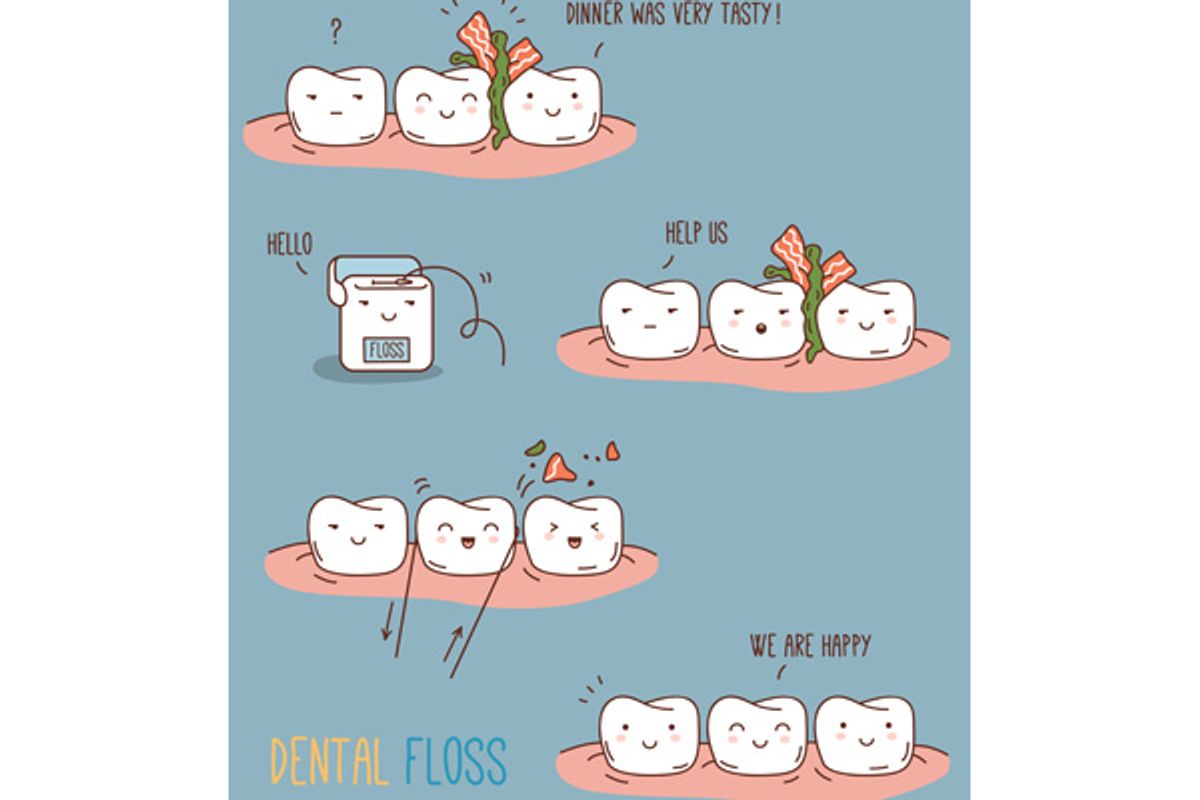A national survey conducted by Harris Poll for the American Academy of Periodontology (AAP) recently discovered that a lot of us are lying to our dentists. No, it's not about how much sugar-laden candy we're eating or how often we brush (or don't brush) our teeth. It's about something that potentially has more impact on our health than that.
Twenty-seven percent of us lie about how often we floss.
The reason is fairly simple: People don't like to floss. In fact, they'd rather wash dishes, clean a toilet or even spend time doing their taxes than floss. The American Dental association reports that only 50 percent of Americans floss daily, 31 percent less than daily and 18 percent don't floss at all.
But when you consider that flossing helps prevent gum disease and cavities and not flossing is the leading cause of tooth loss in adults, it makes you wonder why more people don't do it.
Flossing Facts
1. Maybe you're too tired at the end of the day to bother with flossing. Yet, it doesn't really matter when you do it. The most important thing is to just do it—once a day. Whether you floss before or after you brush doesn't much matter, either.
2. Here's a no-brainer tip for easy flossing: Try storing floss in your car, in your bag or in your office drawer—then break it out when you have time (just don't floss in public—your friends and coworkers will thank you). There's no need to floss in front of a mirror, either. (And there's no need for an excuse if you keep the floss handy and within reach!)
3. Flossing removes plaque from areas between your teeth that your toothbrush can't reach. If this plaque is not removed, it can eventually harden into calculus or tartar, leading to gum disease. There's also evidence that periodontal bacteria can attach to the fatty plaques in blood vessels and set off an inflammatory process, which can lead to heart attack or stroke. Other research has shown that infections in the mouth may be associated with diabetes, pneumonia and other health problems.
4. You need not use only dental floss to clean between your teeth. There are other options specifically made for the purpose, like pre-threaded flossers, tiny brushes that can reach between your teeth, pointed rubber tips or wooden plaque removers.
5. Flossing should not be painful. It's normal for it to be uncomfortable when you first start, but within a week or two, that discomfort should ease.
6. Be aware of flossing too hard—it could damage the tissue between your teeth. But don't be too gentle either, which might not result in a complete job.
7. Children should start to floss as soon as they have two teeth that touch.
More Reading:
The Gross Thing That Happens When You Share a Bathroom
Oral Health
Click here for a flossing demo.







